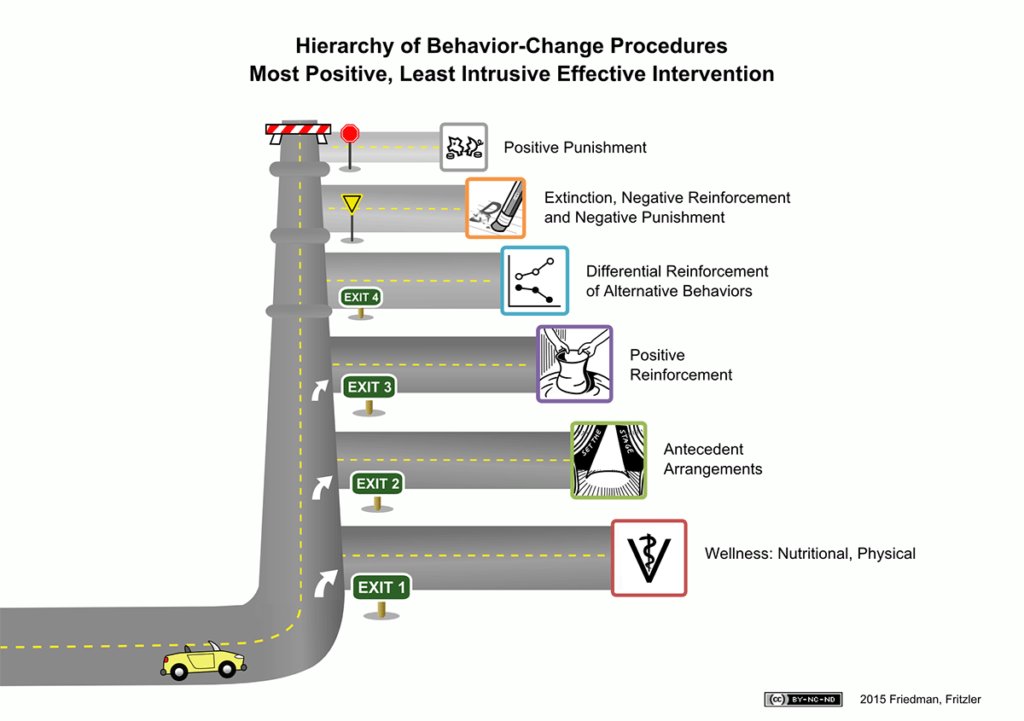Humane Hierarchy
I use the Humane Hierarchy as a guide when I want to influence behavior change.

Here are the steps we follow to change behavior:
- First, it’s important to ensure that the individual is healthy and their needs are being met.
- Example: When a baby cries, you wouldn’t spray them with a squirt bottle! You would first check to see if they need their diaper changed.
- Next, we look at how we can change the environment to prevent or manage the unwanted behavior.
- Example: If you live with a toddler, keep breakable items out of reach.
- Step 3 is where training comes in. When the individual does the behavior you want, you provide them with a reward they value. That encourages them to perform the behavior more often. This is positive reinforcement.
- Example: When my husband does the dishes, I tell him “Thank you. It means a lot to me that you are helping with the chores so I can spend more time helping clients.” Note that this only works if my husband appreciates a heartfelt “thank you,” and if I continue to tell him “thank you” on a regular basis. If I stop expressing my gratitude, he will only continue doing the dishes if there’s a natural reinforcer in place (if he personally enjoys a clean kitchen).
- Positive reinforcement is not the same as bribery. Bribery would be holding out a reward to entice an individual to do the behavior you want. Bribery applies pressure for them to do the behavior “or else.” We want to avoid using bribery because it can result in the individual doing something they’re not comfortable with, and conflicting emotions lead to unpredictable behavior.
- The next option is to teach an alternate behavior to replace the unwanted behavior.
- Example: Dogs can be trained to lay down on their beds instead of barking when the doorbell rings.
- In some cases, it may be appropriate to discuss the use of negative reinforcement (removing something unpleasant to increase the frequency of a behavior), negative punishment (removing something pleasant to decrease the frequency of behavior), or extinction (cutting off reinforcement for a previously reinforced behavior). These techniques should be used sparingly, because of the risk of frustration escalating undesired behavior.
- Example: When the vending machine is broken, I experience frustration because I have come to rely on it for my afternoon snack. I repeatedly slam the vending machine with my fist, but to no avail.
- Example: A toddler throws tantrums in the grocery store. The parents decide to ignore them, but the child escalates their behavior. Finally, the parents give in and buy the child a toy to get them to calm down. The parents have just reinforced the child’s behavior of throwing a major tantrum.
- The use of positive punishment (adding something unpleasant to decrease the frequency of behavior) is not recommended.
- In order to be effective, punishment must be sufficiently aversive and it must be applied 100% consistently (which is almost impossible to do, especially if the unwanted behavior occurs while you’re away).
- It is not appropriate to use punishment with cats. If the punishment is too intense, the cat will be scared of you. If the punishment is seen as positive attention, it will reinforce the behavior. If the punishment is not totally consistent, the cat will experience frustration, which leads to escalating aggression.
